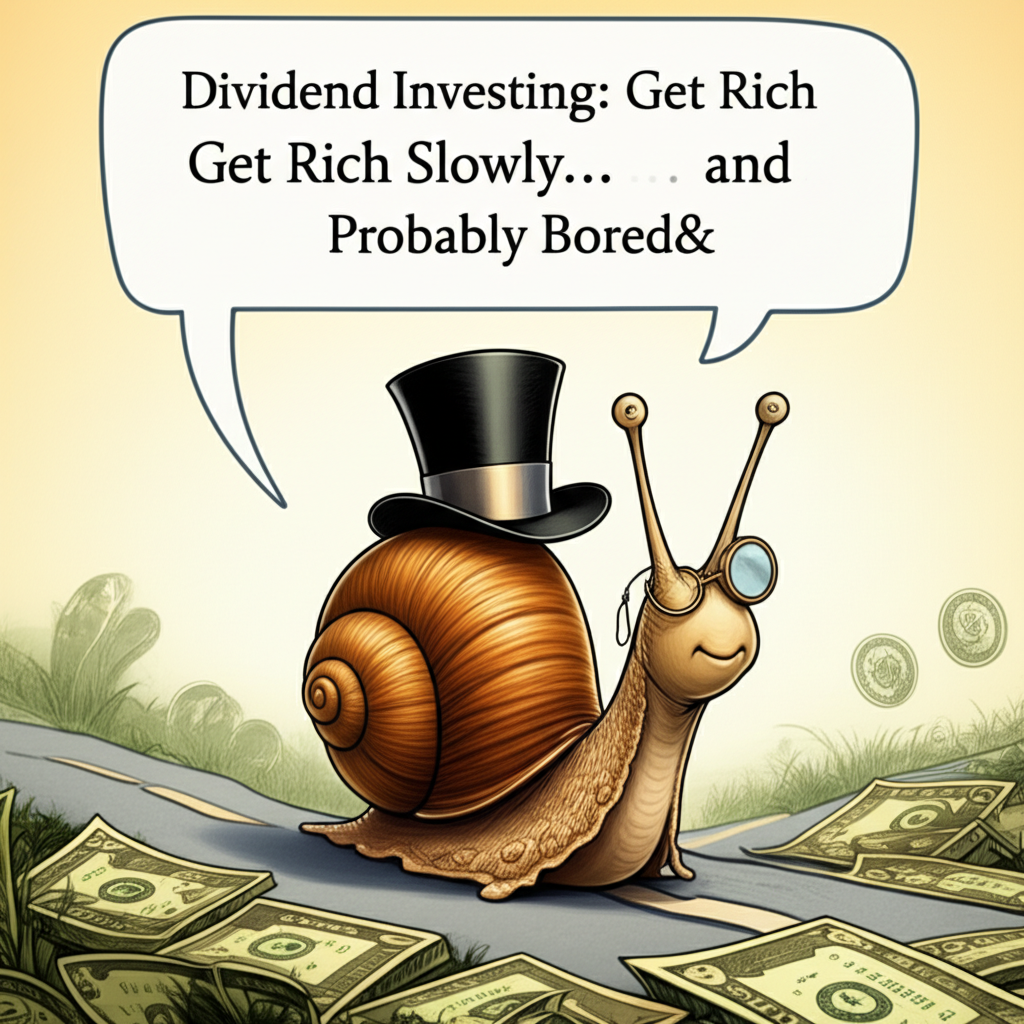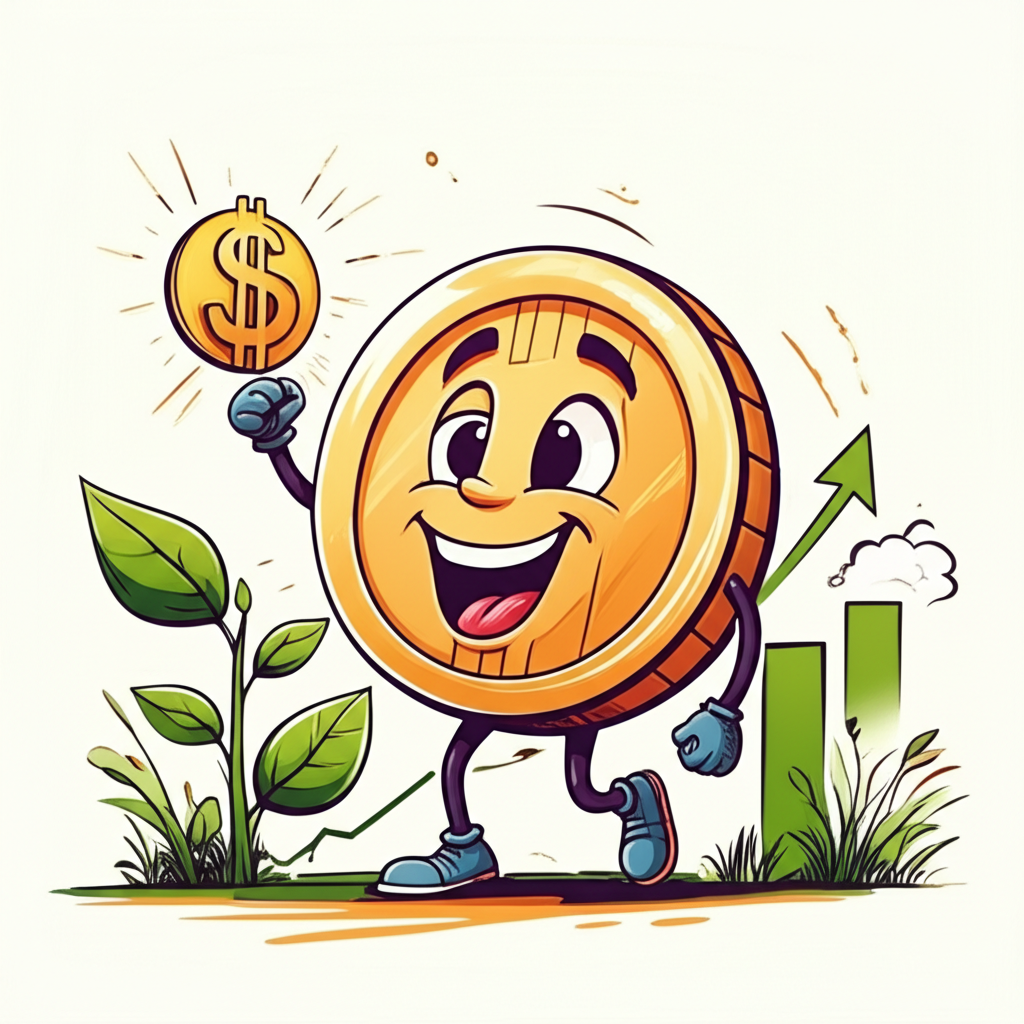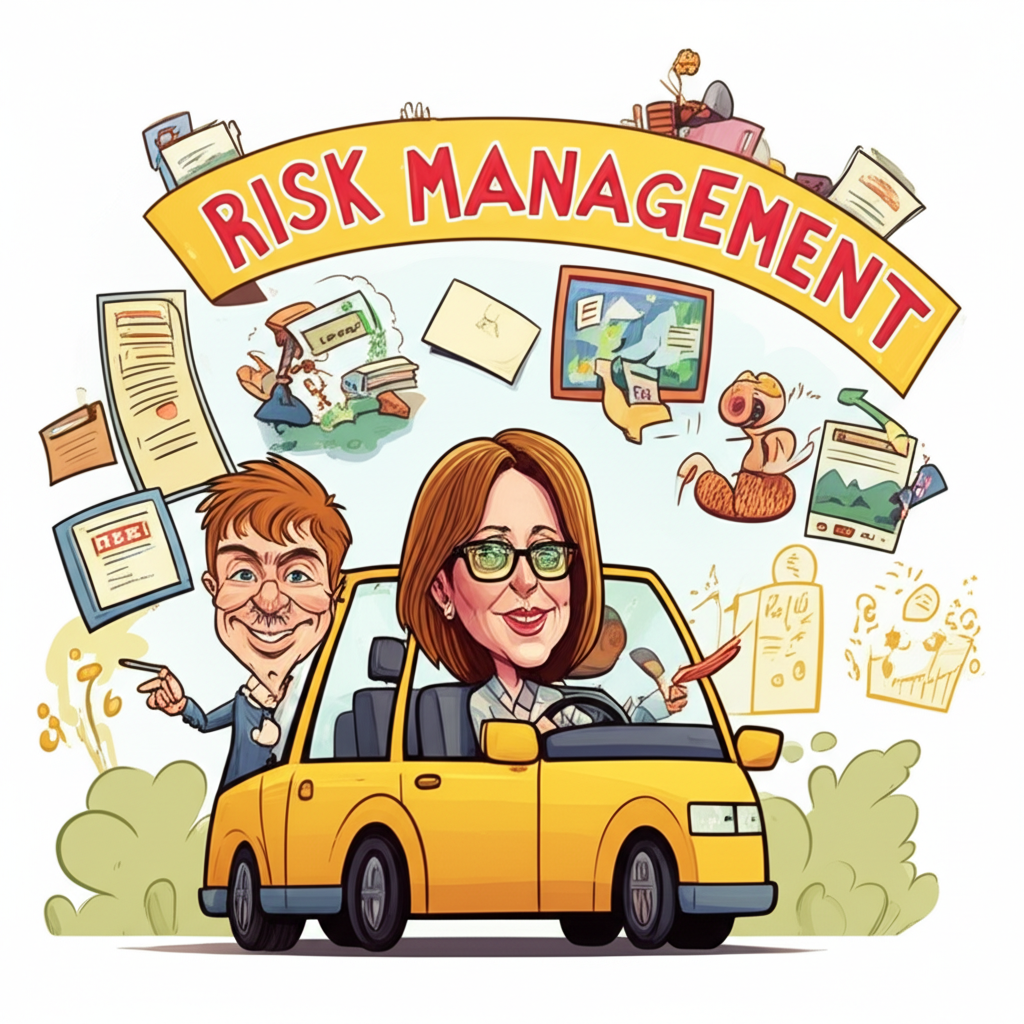
Article 1: "Dividend Investing: Get Rich Slowly… and Probably Bored"
Headline: Dividend Investing: Witness the Miraculous Compounding of Your Wealth… Over the Next 47 Years!
Subheadline: Forget Lamborghinis. Think sensible shoes and early bird specials.
Body:
So, you’ve heard the siren song of dividends. A steady stream of cash flowing into your account, like a tiny, geriatric river of money? Sounds idyllic, right? Well, hold your horses (or, more accurately, hold your mutual fund statements).
Dividend investing is the financial equivalent of watching paint dry. But, hey, sometimes you need to watch paint dry. Especially if that paint is slowly, painstakingly transforming into a… well, a slightly larger can of paint. That’s compounding, baby!
Here’s the deal: companies that are mature and have no exciting ideas on how to use extra cash, give some of it back to you in the form of dividends. This is seen as a very nice thing to do. If they didn’t do this, they’d probably just waste it on fancy office furniture and gourmet coffee machines for the executives.
The Upside:
- Predictable-ish Income: Imagine a world where you know roughly how much money you’ll receive each quarter. (Disclaimer: "Roughly" is the key word. Companies can and do cut dividends faster than you can say "earnings surprise.")
- Less Volatility (Supposedly): Dividend stocks tend to be less volatile than those tech startups promising to revolutionize the world with self-folding laundry. Of course, "less volatile" doesn’t mean "immune to market crashes." Just means you’ll be clutching your pearls slightly less tightly.
- Bragging Rights (to Other Dividend Investors): "Oh, you made 300% on GameStop? That’s cute. I made 4% on Procter & Gamble. And I slept soundly last night."
The Downside:
- The Thrill is Gone: Forget meme stocks and overnight riches. This is a long game. Like, really long. Prepare to explain to your friends why you’re still driving a sensible sedan while they’re chartering yachts.
- Tax Inefficiency (Potentially): Those lovely dividends? Uncle Sam wants a piece. Consider stashing dividend stocks in tax-advantaged accounts to avoid the sting.
- The Lure of Yield Traps: A high dividend yield can be tempting, but it’s often a sign that a company is in trouble. Think of it as the financial equivalent of a suspiciously cheap all-you-can-eat buffet. Proceed with caution (and maybe some antacids).
Conclusion:
Dividend investing is not a get-rich-quick scheme. It’s a get-rich-eventually-maybe-possibly-if-the-market-doesn’t-implode scheme. But if you’re patient, disciplined, and enjoy the quiet satisfaction of watching your money slowly, almost imperceptibly, grow, then welcome to the club. Just don’t expect any excitement. Unless you count the thrill of reinvesting those dividends. Which, let’s be honest, is pretty darn exciting. (For us, anyway.)
Article 2: "Dividend Reinvestment: The Financial Equivalent of Self-Cloning Sheep"
Headline: Dividend Reinvestment: Multiply Your Money! (Slowly… Like, Really Slowly…)
Subheadline: The miracle of compounding, explained with sheep!
Body:
Let’s talk about dividend reinvestment, or DRIP, for those in the know. It’s the practice of taking those sweet, sweet dividend checks and using them to buy more shares of the same stock. Think of it as the financial equivalent of teaching your money to self-reproduce.
The Analogy:
Imagine you have one sheep. It’s a nice sheep. It gives you wool. That wool is your dividend.
Now, instead of buying a new sweater with that wool (i.e., spending your dividend), you use the wool to clone another sheep. Now you have two sheep! More wool! More cloning potential!
And so on, and so forth. Eventually, you have a whole flock of self-cloning sheep, generating a mountain of wool. Congratulations, you’re a wool magnate!
The Reality (Slightly Less Exciting):
- Small Increments: Those dividends might not buy you a whole share. Fractional shares are your friend here. Think of them as the baby sheep of the stock market.
- The Magic of Compounding: Over time, those reinvested dividends buy more shares, which generate more dividends, which buy even more shares… It’s a snowball effect, but a very, very slow-moving snowball.
- Automation is Key: Set it and forget it! Most brokers allow you to automatically reinvest dividends. That way, you don’t have to manually buy fractional shares every quarter. (Unless you enjoy that sort of thing. No judgment.)
Why it’s Great (in Theory):
- Dollar-Cost Averaging: You’re automatically buying more shares when the price is low and fewer shares when the price is high. It’s like having a financial autopilot that makes smart decisions for you.
- Accelerated Growth (Eventually): The more shares you own, the more dividends you receive, the faster your portfolio grows. It’s exponential! (But still slow.)
- Laziness Approved: It’s a hands-off approach to investing. Perfect for those who prefer to spend their time watching paint dry (or, you know, herding self-cloning sheep).
The Catch:
- It Takes Time: Don’t expect to become a millionaire overnight. This is a long-term strategy. Like, really long-term.
- Taxes, Again: Even though you’re reinvesting the dividends, you still have to pay taxes on them. Uncle Sam always gets his cut.
- Company Still Needs to Be Good: If the company goes bankrupt, you are just cloning sheep that are about to die, so it doesn’t work so well.
Conclusion:
Dividend reinvestment is a powerful tool for building wealth over time. It’s like having a financial army of self-cloning sheep, slowly but surely multiplying your money. Just don’t expect any overnight miracles. And maybe invest in a good sheepdog.
Article 3: "High Yield Dividends: The Shiny Penny That Might Be Coated in Turd"
Headline: High Yield Dividends: Is That Sweet, Sweet Cash Flow Worth the Vomit Inducing Risk?
Subheadline: A cautionary tale of dividend yields that sound too good to be true.
Body:
Oh, the allure of a high dividend yield! It’s like a flashing neon sign screaming "FREE MONEY!" to investors, especially those nearing retirement. You see that 12% yield, and suddenly your eyes turn into dollar signs. But before you mortgage the house and dive headfirst into that juicy dividend stock, let’s take a step back and ask a crucial question: Is this dividend yield a genuine treasure, or is it a financial landmine disguised as a pot of gold?
The Danger of Chasing Yield:
A high dividend yield is often a warning sign, indicating that the market has serious concerns about the company’s future. It’s the market’s way of saying, "Hey, we think this company is in trouble, so we’re demanding a higher return to compensate for the increased risk." It’s like a discount sticker on day-old sushi – tempting, but potentially hazardous.
The Warning Signs:
- Unsustainable Payout Ratio: A payout ratio is the percentage of a company’s earnings that it pays out as dividends. A payout ratio above 100% means the company is paying out more in dividends than it’s earning. This is unsustainable in the long run and often leads to dividend cuts. It’s like spending more than you earn each month – eventually, the credit card bills will come due.
- Declining Revenue or Earnings: If a company’s revenue or earnings are declining, it may struggle to maintain its dividend payments. A shrinking pie means smaller slices for everyone, including shareholders.
- High Debt Levels: Companies with high debt levels may be forced to cut dividends to free up cash to pay down debt. It’s like robbing Peter to pay Paul – you’re just delaying the inevitable.
- Industry Headwinds: Companies in industries facing significant challenges (e.g., rapidly changing technology, increased competition) may be more likely to cut dividends. It’s like trying to swim upstream against a strong current – it’s going to be tough.
The Siren Song of High Yields:
We get it. The temptation is real. Who wouldn’t want a steady stream of high-yielding dividends flowing into their account? But remember, there’s no such thing as a free lunch. High dividend yields come with higher risks. And sometimes, the risk outweighs the reward.
Due Diligence is Key:
Before investing in a high-yield dividend stock, do your homework. Research the company’s financials, understand its business model, and assess its competitive landscape. Don’t rely solely on the dividend yield as your investment criterion. It’s like choosing a restaurant based solely on the price of its appetizers – you might end up with a bad case of indigestion.
Conclusion:
High-yield dividends can be tempting, but they’re not always what they seem. Before chasing that sweet, sweet cash flow, make sure you understand the risks involved. Otherwise, you might end up with a dividend yield that’s more trouble than it’s worth. And remember, sometimes the best investment is the one you don’t make. Think of it as dodging a bullet – you’ll feel much better in the long run.


Post Comment